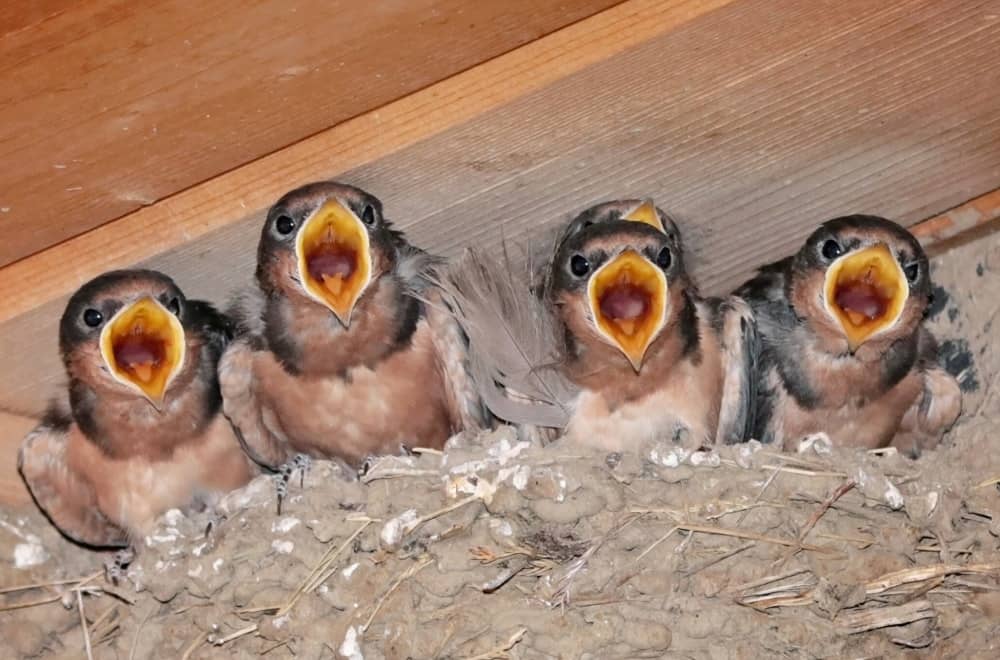Situations and Solutions
Making a mess with mud houses: These birds often attach their nests directly to the siding of homes or buildings and leave behind mud stains. Solutions include providing a temporary wooden ledge for the birds to nest on that can be secured to the house. Cover areas of the building with plastic to eliminate the rough surface they need to construct a nest. Try using scare devices early in spring to deter them from building. Scare devices include wind chimes, scare eye balloons, motion-sensored devices, and aluminium pans.
Once the nest is built and has eggs, it is protected by federal law and may not be disturbed or removed until the birds are no longer using it. Destroying eggs or killing nestlings can have consequences such as large fines or potentially jail time.
You may also consider building tolerance and appreciate the beauty and benefits of having them around. One swallow can eat thousands of mosquitoes everyday and contribute greatly to the decline of mosquito populations.
Feces on a surface: Under nesting areas, these birds defecate on the surfaces people have built. These surfaces could be sidewalks, decks, lawn chairs, etc. Solutions include using scare devices as mentioned above before the nests are built. Place plastic under the nest during the breeding season to facilitate easy cleanup later in the summer.
If you would like to encourage Tree Swallows to your yard you can easily provide them nestboxes. A variety of designs can be found online, but a few key points include:
-
Sturdy exterior-grade wood construction
-
1 3/8” - 1 1/2” entrance hole to keep larger birds out
-
Entrance hole centered 7” above floor
-
Floors not smaller than 5” x 5”
-
Roofs that slope down and overlap sides and fronts, protecting the birds from weather and predators
-
Sides that lift or swing open for easy checking and cleaning
-
Unpainted interiors
-
No perches at entrance holes
Also be sure that the box is placed in an open area with little to no trees, that there is no abundance of free- roaming cats, and that there isn’t already a high population of other songbirds species.
Natural History
There are eight species of swallows in North America. Our most common swallows in Alberta are the Barn, Tree, Bank, Cliff, Northern Rough-winged, and the Purple Martin. Swallows usually fly in large flocks and spend the daytime flying in the sky. These birds are excellent insect and fly catchers and fly with their mouths open trying to catch as many insects as they can at a time. Swallows are rarely seen on the ground, except when Barn, Bank or Cliff Swallows are collecting mud from puddles to build their nests. They usually build their nests close to human homes, in outhouses, barns, and roof spaces. The Cliff Swallow prefers steep hills or cliffs to make its home. Swallows migrate to the tropics every winter and are usually one of the first birds to begin migrating south. Barn Swallow populations are rapidly declining and have been placed on the Threatened Species List.


